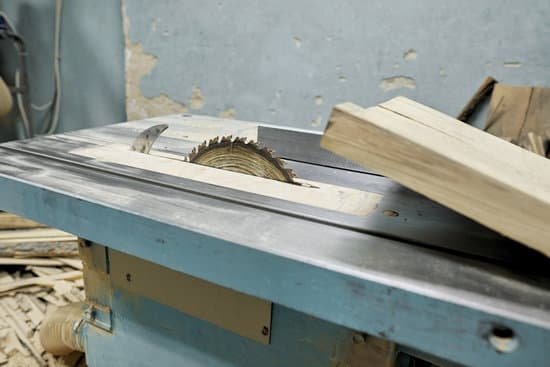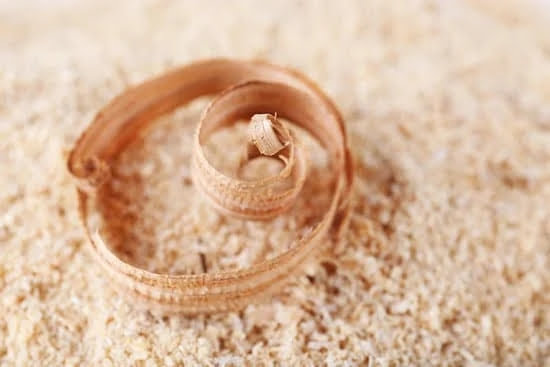Woodworking is a craft that requires precision and the right tools to bring a vision to life. Central to this art form is the selection of the perfect blade for every task. Whether you’re making intricate cuts or shaping large pieces of wood, having the right blade can make all the difference. In the world of woodworking, one type of blade that stands out for its versatility is the combo blade.
Combo blades are designed to handle a variety of cutting tasks, making them a popular choice among woodworkers. These blades combine different cutting styles into one, allowing users to switch seamlessly between ripping and crosscutting without having to change blades. This saves time and effort in switching equipment, ultimately increasing productivity in woodworking projects.
What sets combo blades apart from other types commonly used in woodworking is their unique composition. Usually made up of a combination of flat-top teeth and alternate top bevel teeth, these blades are suitable for both ripping through wood fibers and creating clean crosscuts. The flat-top teeth aid in efficient ripping by shearing through the length of the wood grain, while the alternate top bevel teeth ensure clean crosscuts with minimal tear-out.
In this article, we will delve deeper into what exactly constitutes a combo blade and its components that contribute to its exceptional functionality and versatility in woodworking projects. We will also explore the advantages of using combo blades over multiple specialized blades and examine various types available in the market.
Additionally, we’ll provide important tips on selecting the right combo blade for your specific woodworking needs while emphasising safety measures when working with these powerful tools. So whether you’re an experienced woodworker looking to upgrade your toolset or a beginner dipping your toes into the world of woodworking, stay tuned as we uncover all there is to know about combo blades in woodworking.
What is a combo blade in woodworking?
A combo blade, in the context of woodworking, refers to a type of saw blade that combines different cutting styles into a single blade. It is designed to provide versatility and efficiency by incorporating both ripping and crosscutting abilities in one tool. Unlike specialized blades that are specifically tailored for either ripping or crosscutting, combo blades offer woodworkers the convenience of using a single tool for multiple cutting tasks.
Combo blades typically have a combination of teeth with varying tooth angles and geometries. This allows them to perform both ripping (cutting along the grain of the wood) and crosscutting (cutting across the grain of the wood) operations effectively. The teeth on a combo blade can range from larger, flat-topped teeth for ripping cuts, to smaller, beveled teeth for clean crosscuts.
One of the key differences between combo blades and other types of blades commonly used in woodworking is their dual-purpose design. While dedicated ripping blades excel at efficiently removing stock along the grain, they may result in rough edges when used for crosscutting.
Similarly, dedicated crosscutting blades produce clean cuts across the grain but may struggle when used for rip cuts. In contrast, combo blades strike a balance between these two cutting styles, allowing woodworkers to achieve quality results without having to switch between multiple blades.
Using a combo blade offers several advantages in woodworking projects. Firstly, it provides cost-effectiveness by eliminating the need to purchase separate ripping and crosscutting blades. Woodworkers can save money by investing in a single versatile blade that can handle various applications effectively. Secondly, combo blades save time by eliminating the need for frequent tool changes during different stages of a project. Woodworkers can seamlessly switch between ripping and crosscutting operations without compromising on efficiency or finished quality.
In summary, a combo blade is an essential tool in woodworking due to its versatility and ability to handle different cutting tasks effectively. By combining both ripping and cross-cutting abilities in one tool, woodworkers can save time and money while achieving quality results. In the next section, we will delve into the features and components that make up a combo blade, further exploring how each element contributes to its functionality and versatility.
Features and components of a combo blade
A combo blade in woodworking is a versatile tool that combines multiple cutting styles into one blade. It typically consists of a combination of ripping teeth and crosscutting teeth, allowing woodworkers to perform both functions with a single blade. This eliminates the need to switch blades for different cutting tasks, saving time and increasing efficiency in the workshop.
One of the key features of a combo blade is its tooth configuration. Combo blades usually have a mix of alternating ripping teeth and flat top or alternate top bevel (ATB) crosscutting teeth. The ripping teeth are designed to efficiently remove material along the grain of the wood, while the crosscutting teeth create clean, precise cuts across the grain.
In addition to their tooth configuration, combo blades also have other components that contribute to their functionality and versatility. These include:
- Gullet size: The gullets are the spaces between the teeth that help remove sawdust from the cut. Combo blades typically have larger gullets compared to dedicated rip or crosscut blades. This allows for efficient chip removal, preventing clogging and heat build-up during cuts.
- Expansion slots: These slots are incorporated into the design of combo blades to help dissipate heat generated during cutting, reducing the risk of warping or damaging the blade.
- Carbide tips: Combo blades are commonly made with carbide-tipped teeth, which provide superior durability and longevity compared to regular steel teeth. The carbide tips ensure that the blade maintains sharpness even after prolonged use.
By combining these different components, combo blades offer woodworkers flexibility in their cutting tasks without compromising on quality or precision. Whether it’s ripping through boards or making smooth crosscuts, a combo blade can handle both tasks effectively, making it an essential tool in any woodworking shop.
To summarize:
- A combo blade features a combination of ripping and crosscutting teeth in its tooth configuration.
- Other components like gullet size, expansion slots, and carbide tips contribute to the blade’s functionality and durability.
- Combo blades offer woodworkers versatility in their cutting tasks, saving time and enhancing efficiency.
Advantages of using a combo blade
One of the main advantages of using a combo blade in woodworking is its versatility. A combo blade is designed to perform multiple cutting tasks, making it suitable for a wide range of woodworking projects. Unlike specialized blades that are designed for specific tasks, such as ripping or crosscutting, combo blades have the ability to handle both types of cuts effectively. This means that woodworkers can save time and effort by using a single blade for various cutting needs.
Another advantage of using a combo blade is cost-effectiveness. Instead of purchasing multiple blades for different cutting tasks, woodworkers can invest in a high-quality combo blade that can perform all these tasks. Combo blades are typically more affordable compared to buying several specialized blades. Additionally, fewer blades also mean less storage space required in the workshop.
Combo blades also offer convenience and ease-of-use. Since they are designed to handle various cutting styles, woodworkers do not have to constantly switch between different blades for different cuts. This saves time and allows for smoother workflow during woodworking projects. Furthermore, combo blades often come with special features such as anti-vibration technology or laser-cut expansion slots, enhancing their performance and providing cleaner cuts.
| Advantages |
|---|
| Versatility |
| Cost-effectiveness |
| Convenience and ease-of-use |
Different types of combo blades
A combo blade is a versatile tool that combines the features and cutting capabilities of multiple blades into one. This section will explore the various types of combo blades available in the market and highlight their unique characteristics and applications.
Rip-Crosscut Combo Blades
One type of combo blade commonly used in woodworking is the rip-crosscut combo blade. As the name suggests, this blade is designed to effectively perform both ripping and crosscutting tasks. The rip teeth are optimized for cutting along the grain of the wood, while the crosscut teeth are designed to make clean cuts across the grain. This makes it ideal for projects that require both types of cuts, such as building furniture or cabinetry.
General Purpose Combo Blades
Another popular type of combo blade is the general purpose combo blade. This blade is designed to handle a wide range of cutting tasks, making it a versatile option for various woodworking projects. It typically has a balanced tooth design that allows it to make efficient cuts across different types of wood, whether it’s softwood or hardwood. The general purpose combo blade is often used by hobbyists and DIY enthusiasts who work on diverse projects.
Multipurpose Combo Blades
The multipurpose combo blade is another variation commonly found in woodworking shops. As its name suggests, this type of blade offers even more versatility than other combos. It can handle not only common crosscuts and rips but also other specialized tasks like miter cuts and laminate trimming. This makes it an attractive option for woodworkers who tackle complex projects that require different types of cuts.
When choosing among these different types of combo blades, consider your specific woodworking needs and project requirements. Each type has its own strengths and limitations, so selecting the right one will ensure optimal performance and quality results.
Overall, combo blades are an excellent investment for any woodworker due to their versatility and cost-effectiveness compared to using multiple separate blades. Whether you’re a professional cabinet maker or a weekend DIYer, having the right combo blade in your toolkit will enable you to tackle various woodworking tasks with ease and precision.
Common uses and applications of combo blades
Furniture Making
Combo blades are especially popular in the realm of furniture making. This is because many types of furniture require a combination of different cutting styles to achieve the desired result. For example, when making a dining table, you may need to rip through thick boards for the tabletop while also needing to make precise crosscuts for the legs.
A combo blade allows woodworkers to easily switch between ripping and crosscutting without having to change blades or adjust equipment. This saves time and effort, allowing for smoother and more efficient furniture production.
Cabinetry
Cabinetmaking is another area where combo blades shine. Cabinets often involve various types of cuts such as dadoes, rabbets, and miters. These different cutting techniques are essential for creating joints and assembling cabinet components accurately.
With a combo blade, woodworkers can seamlessly switch between these cutting styles on a single blade, eliminating the need to swap out blades or make extensive adjustments. Additionally, combo blades tend to produce cleaner cuts with less tear-out than specialized blades designed specifically for one type of cut.
Other Applications
In addition to furniture making and cabinetry, combo blades find great utility in other woodworking applications that require versatility in cutting styles. This includes projects like building bookshelves with adjustable shelves that require both ripping and crosscutting operations. Combo blades are also useful in constructing doors with mortise-and-tenon joints or frames with beveled edges. Essentially, any woodworking project that involves multiple cutting techniques can benefit from using a combo blade.
Combo blades have become an essential tool for woodworkers looking to streamline their projects while maintaining high-quality results. The ability to seamlessly switch between ripping and crosscutting or perform more specialized cuts makes combo blades highly versatile and cost-effective compared to using multiple individual blades. Whether it’s for furniture making, cabinetry, or other woodworking applications, a combo blade can greatly enhance efficiency and precision in the workshop.
Tips for selecting the right combo blade
When it comes to selecting the right combo blade for your woodworking projects, there are several factors to consider. The type of wood you are working with, the desired finish of your project, and other specific needs will all play a role in determining the ideal combo blade for your task. Here are some tips to help you choose the right combo blade:
- Blade Teeth Configuration: Combo blades typically feature a combination of rip teeth and crosscut teeth, allowing them to excel in both ripping and crosscutting applications. However, the configuration and number of teeth can vary. Blades with a higher tooth count (usually above 60) offer cleaner, smoother cuts for finer work but may sacrifice some ripping efficiency. On the other hand, blades with a lower tooth count (around 24-40) prioritize ripping power over smoothness.
- Tooth Grind: The type of grind on the teeth can also impact the performance of your combo blade. Blades with alternate top bevel (ATB) or triple chip grind (TCG) teeth are commonly used in combo blades. ATB teeth provide clean and precise crosscuts while TCG teeth are more suitable for tough materials like plywood or laminates.
- Kerf Width: The width of the cut made by the blade, known as its kerf width, is another consideration when selecting a combo blade. Thicker kerfs result in wider cuts but offer increased stability and durability. Thinner kerfs produce narrower cuts and remove less material but require less power and reduce waste.
- Coating: Many combo blades come with specialized coatings that enhance their performance and longevity. For example, coatings like carbide-tipped or titanium nitride can increase durability, reduce heat buildup, minimize friction, and prevent corrosion.
- Budget: Set a budget range before starting your search for a combo blade to ensure you find one that meets both your woodworking needs and financial constraints.
| Tips for Selecting the Right Combo Blade |
|---|
| 1. Blade Teeth Configuration: Evaluate the tooth count and configuration based on your specific needs. |
| 2. Tooth Grind: Consider whether you need ATB or TCG teeth based on the type of cuts you’ll be making. |
| 3. Kerf Width: Determine the desired width of your cuts and choose a blade with an appropriate kerf width. |
| 4. Coating: Consider blades with specialized coatings to improve performance and durability. |
| 5. Budget: Set a budget range to find a combo blade that meets your needs without breaking the bank. |
Maintenance and care for combo blades
Proper maintenance and care are crucial for maintaining the longevity and optimal performance of combo blades in woodworking. By consistently maintaining and caring for your combo blades, you can ensure that they continue to deliver clean cuts and precise results. Here are some essential tips to help you keep your combo blades in top condition.
Cleaning is an essential part of blade maintenance. After each use, it’s important to remove any buildup of wood chips, resin, or other debris that may have accumulated on the blade. This can be done using a stiff brush or a cleaning solution specifically designed for saw blades. Make sure to work carefully and avoid applying excessive pressure to prevent damage to the teeth.
Sharpening is another critical aspect of maintaining combo blades. As with any cutting tool, combo blades will dull over time with regular use. Dull blades not only produce subpar cuts but also pose a safety risk as they may require more force to cut through materials. Sharpening can be done using various methods depending on personal preference and expertise level. Some woodworkers prefer hand sharpening techniques while others opt for specialized sharpening tools or professional sharpening services.
Proper storage is also necessary to protect combo blades when not in use. Ideally, they should be stored in a dry area away from moisture, dust, and other potential contaminants. Using blade protectors or custom blade cases can help prevent accidental damage or dullness caused by contact with other tools or materials.
It’s important to note that while regular maintenance is vital, there comes a point where even the best-cared-for combo blade will need replacement due to wear and tear. Keeping an eye out for signs of excessive wear such as missing or chipped teeth, bent edges, or visible cracks is essential for preventing accidents and ensuring optimal cutting performance.
By following these maintenance tips and providing proper care for your combo blades, you can extend their lifespan significantly while enjoying consistent and high-quality results in your woodworking projects. Remember to always prioritize safety when handling and maintaining your blades, as a well-maintained combo blade paired with safe practices will ensure both efficiency and longevity.
Combining safety with using combo blades in woodworking
When it comes to woodworking, having the right tools and equipment is essential for both efficiency and safety. One crucial tool that woodworkers rely on is a combo blade. A combo blade offers versatility and can handle a variety of cutting styles, making it a popular choice among woodworkers. However, it is important to prioritize safety when using combo blades to minimize the risk of accidents or injuries.
To ensure safety while using combo blades in woodworking, there are several precautions that should be followed. Firstly, always wear the appropriate protective gear, including safety glasses or goggles to protect your eyes from flying debris. Additionally, wearing hearing protection and a dust mask or respirator can help safeguard against potential health hazards.
Another important aspect of safety when using combo blades is understanding proper techniques. It is crucial to maintain control of the workpiece at all times and use proper hand placement when operating power tools. When working with a table saw or another tool that requires feeding material into the blade, engage in “splitter” installation to prevent kickback accidents.
In addition to protective gear and proper techniques, following best practices is essential when using combo blades in woodworking. Always ensure that the blade is securely fastened and correctly aligned before starting any cuts. Regularly inspect the blade for any signs of damage or worn-out components, such as missing teeth or excessive vibration during operation.
By combining safety measures with the use of combo blades in woodworking projects, woodworkers can enjoy the benefits of these versatile tools while minimizing the risk of accidents or injuries. Prioritizing safety ensures a productive and enjoyable woodworking experience while protecting against potential hazards associated with power tools.
Remember to stay alert, focused, and follow all recommended safety guidelines when working with combo blades or any other tools in your workshop. Combining safety precautions with efficient woodworking techniques will allow you to unleash your creativity while keeping yourself safe.
Conclusion
In conclusion, combo blades are a versatile and cost-effective tool that every woodworker should consider adding to their arsenal. As discussed throughout this article, combo blades offer the convenience of multiple cutting styles in one blade, saving both time and money. Their ability to handle different types of cuts, such as ripping and crosscutting, makes them indispensable for a variety of woodworking projects.
By combining the features of rip blades and crosscut blades, combo blades offer the best of both worlds. They have the aggressive tooth geometry needed for smooth ripping cuts while also having the fine teeth required for clean crosscuts. This versatility allows woodworkers to tackle a wide range of projects without having to switch between different specialized blades.
Furthermore, selecting the right combo blade for your specific woodworking needs is crucial. Factors such as the type of wood being worked on, desired finish, and budget should all be taken into consideration. By choosing the appropriate combo blade, woodworkers can achieve precise and efficient cuts while maximizing the lifespan of their blade.
Frequently Asked Questions
What is a combination blade used for?
A combination blade is primarily used for general purpose cutting tasks in woodworking. This type of blade is designed to handle both ripping and crosscutting, making it versatile for various applications.
It typically features a mix of teeth with different tooth configurations, including both flat-top rakers and alternate top bevels. The flat-top rakers are suitable for ripping along the wood grain, while the beveled teeth help to achieve cleaner crosscuts across the grain.
What is the difference between crosscut and combination blade?
The main difference between a crosscut blade and a combination blade lies in their tooth design and application focus. Crosscut blades are specifically optimized for making smooth cuts across the wood grain, leaving minimal tear-out or splintering on the material’s surface.
They generally have many more teeth, usually with a higher tooth count, in order to make these precise cuts. On the other hand, combination blades are designed to handle both rip cuts along the grain and crosscuts across the grain, so they have a balance between ripping and crosscutting capabilities.
Are combination blades good?
Combination blades can be considered good options for many woodworking projects due to their versatility. Since they can perform both ripping and crosscutting tasks reasonably well, they eliminate the need for frequently swapping blades when switching between different types of cuts in woodworking projects with multifaceted requirements.
While their performance may not match that of specialized blades designed solely for ripping or crosscutting, they provide an efficient compromise by providing acceptable results across various cutting applications. However, for those who require exceptionally smooth crosscuts or extremely clean rips, dedicated high-quality specific blades may still offer superior results compared to combination blades suited for more general purposes.

Hi everyone! I’m a woodworker and blogger, and this is my woodworking blog. In my blog, I share tips and tricks for woodworkers of all skill levels, as well as project ideas that you can try yourself.





